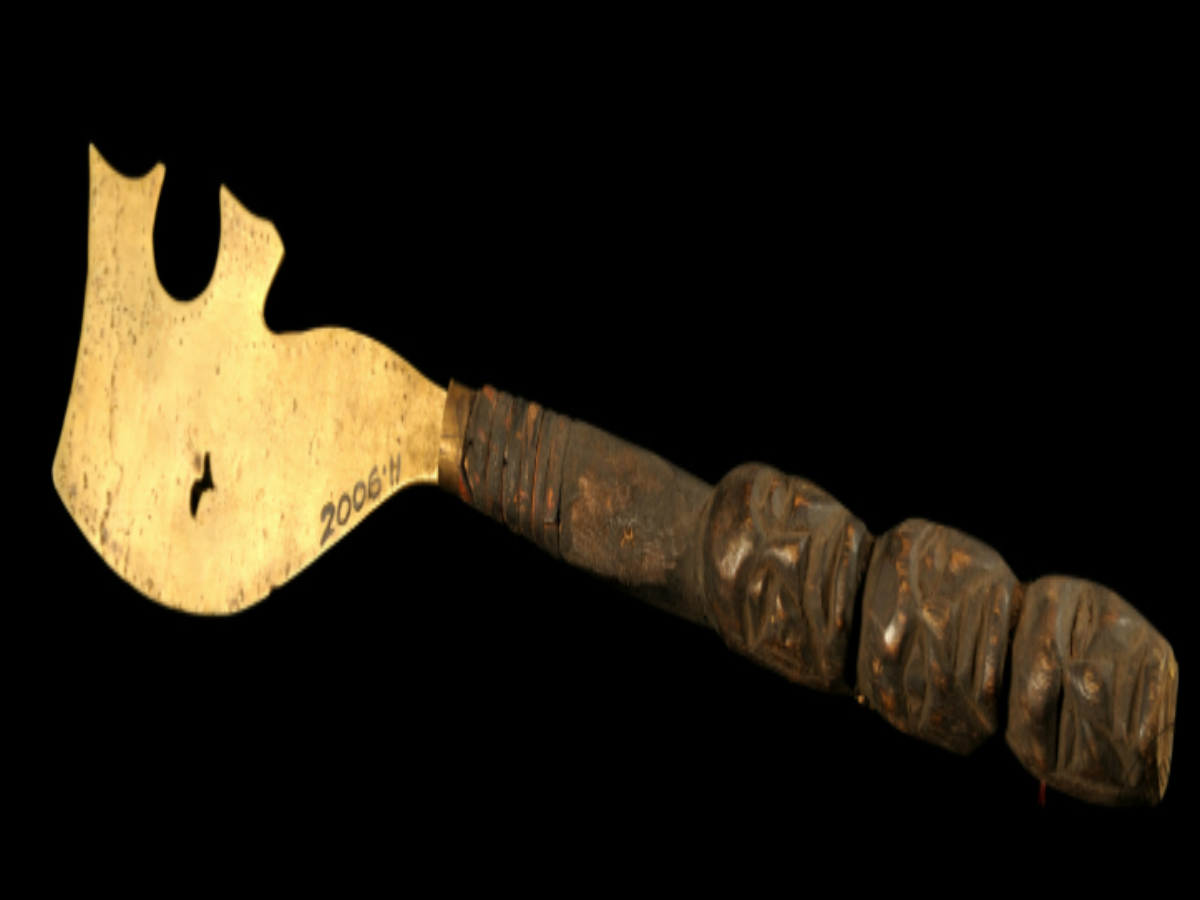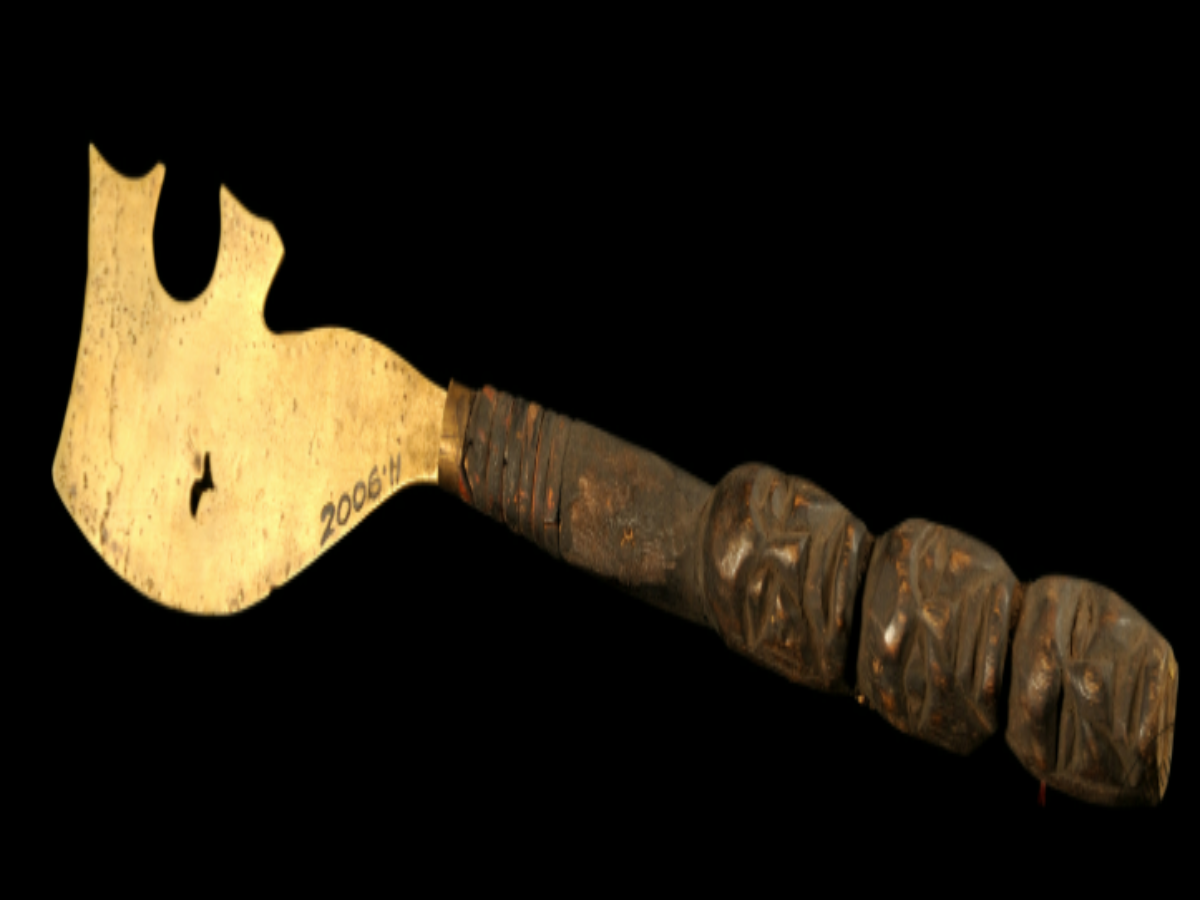State
Tribe Name
Art Type
short description
The Konyak Naga tribe has a warrior-oriented past and unique traditions originating from the Mon district of Nagaland. The highly ornate appearance of their ceremonial weapon, the yangngak, stands as a powerful metaphor for martial prowess, artistry, and ritualism. This dao has two components the blade and the handle. The handle is made of wood carved all over with three small wooden heads apparently symbolizing heroism, ancestors' spirits, or the head-taking legacy that was once the life of Konyak. The end edges have tufts of animal hairs around the handle, adding a strong dramatic and symbolic touch, probably indicative of valour and status in the tribe.
Thumbnail

Filter Postion
Left
Filter Background
Off
Theme
Filter Header Image

content
Image

description
The Konyak Naga tribe has a warrior-oriented past and unique traditions originating from the Mon district of Nagaland. The highly ornate appearance of their ceremonial weapon, the yangngak, stands as a powerful metaphor for martial prowess, artistry, and ritualism. This dao has two components the blade and the handle. The handle is made of wood carved all over with three small wooden heads apparently symbolizing heroism, ancestors' spirits, or the head-taking legacy that was once the life of Konyak. The end edges have tufts of animal hairs around the handle, adding a strong dramatic and symbolic touch, probably indicative of valour and status in the tribe.
The blade forged from brass disqualifies it from the league of iron or steel blades. The multiplication of beauty is usually thought to have ceremonial importance. The blade bears two notches at the edges while a small slit sits at the center most probably for beautification and significance. A brass ferrule supplies the junction where the blade adjoin the handle, reinforcing the ringing connection of the weapon, and added edifice to its ornate construction. The yangngak was used not only in civil wars or hunting but also in rituals and festivals where it represented a proud demonstration of festival valour and prowess. In this, the people's extraordinary skills in metal and woodwork are manifest, thus their intense regard for the objects of cultural pride.
The blade forged from brass disqualifies it from the league of iron or steel blades. The multiplication of beauty is usually thought to have ceremonial importance. The blade bears two notches at the edges while a small slit sits at the center most probably for beautification and significance. A brass ferrule supplies the junction where the blade adjoin the handle, reinforcing the ringing connection of the weapon, and added edifice to its ornate construction. The yangngak was used not only in civil wars or hunting but also in rituals and festivals where it represented a proud demonstration of festival valour and prowess. In this, the people's extraordinary skills in metal and woodwork are manifest, thus their intense regard for the objects of cultural pride.
Image Mode
landscape
promoted
On
Verified
Off
